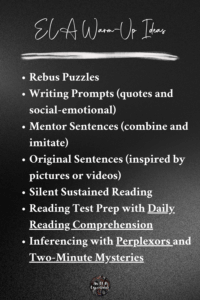If you’re looking for a way to engage your students and get their minds warmed up for the day, these ELA warm-ups are the perfect solution! With seven quick and easy choices, you can vary your warm-ups and get your students thinking and ready to tackle their reading and writing activities.
ELA Warm-Ups for Outside-the-Box Thinking
Rebus Puzzles
You may have read that puzzles positively affect problem-solving skills, creative thinking, and metacognitive processes. These are great reasons to use rebus puzzles as warm-ups, but allow me to give you two more: vocabulary and student engagement.
Rebus puzzles link to our ELA curriculum with vocabulary in context because they challenge students to figure out a word or phrase when presented with a combination of words, letters, pictures, and symbols. (They’re not your standard reading passage, but students are using context to determine vocabulary.)
These ELA warm-ups also engage students (special education to gifted and talented). The kids love them! In fact, on Fridays, the day I use these puzzles, students walk into the room excitedly shouting, “Rebus day!” On top of that, they immediately start trying to solve the puzzle.
Here’s a rebus I came up with for a worksheet on semicolons.

But you don’t have to make your own. Just google rebus puzzles; you’ll find plenty of free puzzles online, like this one. (Since these are short and sweet, I assign two at a time.)
ELA Warm-Ups for Writing
Writing Prompts
Writing improves writing; the more you write the better you write. With this in mind, consider using writing prompts for your ELA warm-ups.
Social-Emotional Prompts
During the 2020-21 school when a third of my students were at home because of the pandemic, I started using warm-ups based on Christine Fonseca’s book I’m Not Just Gifted: Social-Emotional Curriculum for Guiding Gifted Children. (I was teaching middle school GT ELA that year.) These warm-ups were a hit because they gave us the opportunity to discuss issues that were important to students and build relationships in the process. A win, win!
I can’t share these with you because of copyright laws, but I found some from Teen Tech University on Teachers Pay Teachers. I’m planning to use these with my high school students (regular ed) this year. They’re good and they’re free. Another win, win!
Quotes as Prompts
Another type of writing prompt I use is one where students respond to quotes. I use Brainy Quote to find the quotes because I can search by topics and authors, which makes it easy to choose one that connects to the material we’re covering in class.
Students respond to the quote by explaining the quote, what they notice, why they agree or disagree, or how it applies to the world today.
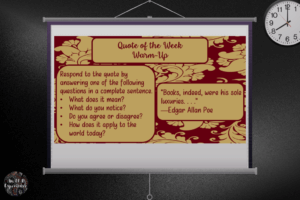
This school year, I will use writing warm-ups on Mondays, initially allowing students five minutes to respond and gradually extending that to ten minutes to build stamina. After the writing time ends, students will share and discuss their writings with their elbow partners and up to three volunteers will share their responses with the class. (Notice that writing warm-ups take more than five minutes. Hence, the reason I’ll limit them to Mondays. Still, my students will write every day during other lessons.)
Writing warm-ups will be completed on a sheet of paper, and students will hand their warm-ups in at the end of every week. Students will keep all other writings in their writers’ notebooks. (By the way, I always write with them and keep my own writer’s notebook.)
ELA Warm-Ups for Comma Use
Comma Warm-Ups
In the old days, teachers had students correct sentence errors, but research proves this is ineffective. Instead, it’s best to use mentor texts and ask students to combine, imitate, and write sentences.
At the end of this blog post, you’ll find a free resource that does just that. It includes a slideshow and warm-ups for five comma rules. For ninety days of warm-ups, visit Grammar Warm-Ups Bundle at my TPT store. Like the free warm-ups at the bottom of this page, they ask students to combine and imitate mentor sentences and write original sentences (inspired by pictures or videos).

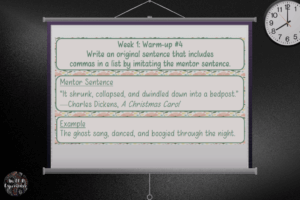 .
.

If you prefer to create your own, follow these steps:
- Find interesting mentor sentences that adhere to the comma rule you want to study. For an example, let’s use compound sentences. When reading, makes notes in the margin when you see a compound sentence. (I write cc for compound sentences that use coordinating conjunctions and ; for ones with semicolons.)
- You’ll be typing these onto Google or PowerPoint slides (unless you prefer a document).
- On one slide, break that sentence into two complete sentences.
- On the same slide, write directions that ask students to use a comma and a coordinating conjunction (or a semicolon) to combine the sentences to create a compound sentence.
- On the next slide, type the sentence as the author wrote it.
- On the third slide, type a mentor sentence that asks students to write a compound sentence by imitating the mentor sentence.
- On the fourth slide, insert a picture or short video along with directions that require students to write an original compound sentence using the image for inspiration.
This takes some time, so you might as well get my freebie and buy my warm-ups. 😉
Because students do not know how to punctuate and they need practice to master commas, semicolons, etc., these are the warm-ups I assign to my students most often (three to four days a week).
ELA Warm-Ups for Reading

As writing improves writing, reading improves reading. Some teachers use Silent Sustained Reading (SSR) as a warm-up. (I don’t. However, when my classes were one-and-a-half-hour blocks, I gave students ten to fifteen minutes a day to read a book of their choice. This year, my classes are forty-five minutes, and I will schedule ten to fifteen minutes a week for independent reading.
Whether you’re using silent reading as a warm-up or activity, read while your students are reading. It’s a good practice.
ELA Warm-Ups for Inferencing
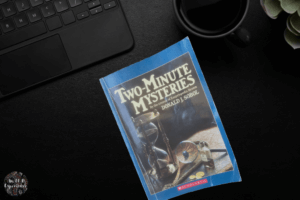
Perplexors offer a fun way to practice inferencing skills. I used these in my middle school GT ELA classes, but they’re great for other subjects and available for different levels.
Two-Minute Mysteries was recommended to me by a fellow English teacher. Amazon notes a reading age of nine to eleven (per customers), but these two-page mysteries will even have older students rereading to solve the mysteries. (This book is another warm-up that I use on Mondays.)
ELA Warm-Ups for Reading Test Prep
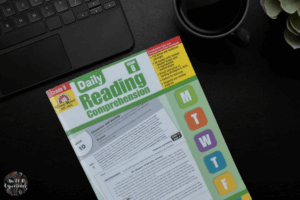
This is actually number eight on the list, but I have to include this book because it helps prepare students for our state reading test.
You’re responsible for a state reading test, and you don’t want to use an actual test for a warm-up because it will take an entire class period and you want to focus on the skill that you’re covering in class. That’s where Daily Reading Comprehension comes in handy. It has short passages that focus on various topics (e.g., comprehension, main idea, author’s purpose, character, setting, theme, inferences, etc.). Choose the topic your students are studying and make copies for them. Then use the back for shorter warm-ups.
This is another warm-up I use on Mondays because of time. The book is a little pricey, but it does help prepare students for their state reading tests. Require students to support their responses by underlining evidence in the text and writing the question number next to it. Also, if you purchase this book, make sure it’s the multiple-choice option so that it will resemble a state test (and save you time on grading).
Related Links
For help with implementing warm-ups, visit “Grammar Warm-Ups Made Simple: 9 Helpful Hints for Success.”
For more warm-up ideas, see “18 Warm-Up Activities to Engage Students Before They Read Nonfiction Texts.” (These work for fiction too.)
Also remember to check out the free comma resources at the bottom of this page (including warm-ups) and my grammar warm-up bundle.
ELA Warm-Ups in a Nutshell

I’ve shared a number of warm-up ideas with you, but make it easy on yourself (while providing a routine for students) by deciding on a warm-up schedule. Mine will look like this:
- On Mondays, students will respond to quotes or social-emotional writing prompts, complete a page from Daily Reading Comprehension, or solve a mystery or a puzzle (Perplexor). These warm-ups will vary so that I can address students’ needs and the curriculum we’re covering at the time (e.g., social-emotional, writing, specific reading skills, etc.).
- On Tuesdays through Thursdays, they will combine and imitate sentences for specific comma rules.
- On Fridays, they will work on rebus puzzles or write sentences about pictures or videos for specific comma rules.
By doing this, students know what to expect when they walk into my classroom each and every day. At the same time, the warm-ups are varied enough so they don’t become bored with the same warm-up.
Thank you for reading! If you have any questions or want to add an ELA warm-up idea to this list, please comment below.
